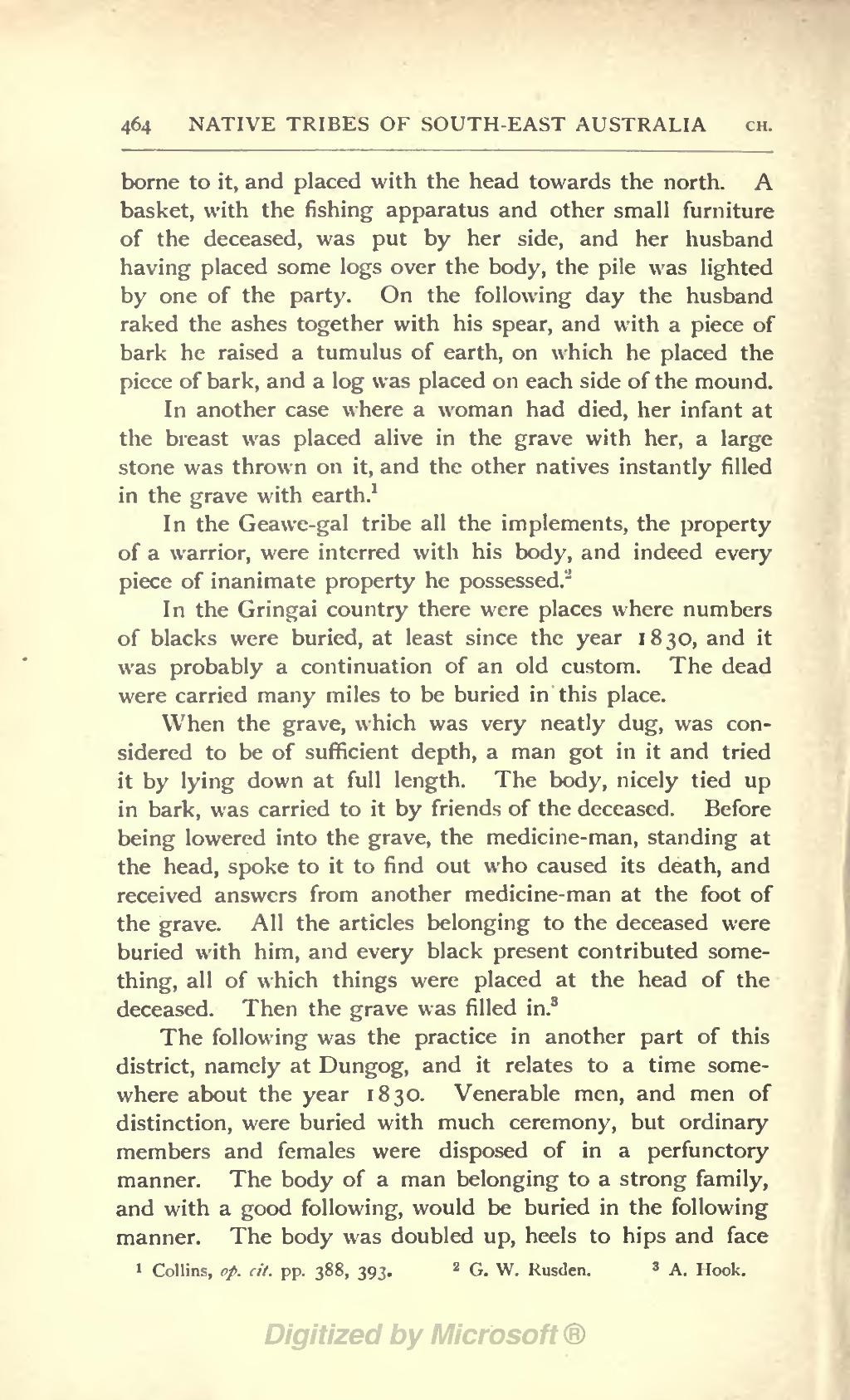borne to it, and placed with the head towards the north. A basket, with the fishing apparatus and other small furniture of the deceased, was put by her side, and her husband having placed some logs over the body, the pile was lighted by one of the party. On the following day the husband raked the ashes together with his spear, and with a piece of bark he raised a tumulus of earth, on which he placed the piece of bark, and a log was placed on each side of the mound.
In another case where a woman had died, her infant at the breast was placed alive in the grave with her, a large stone was thrown on it, and the other natives instantly filled in the grave with earth.[1]
In the Geawe-gal tribe all the implements, the property of a warrior, were interred with his body, and indeed every piece of inanimate property he possessed.[2]
In the Gringai country there were places where numbers of blacks were buried, at least since the year 1830, and it was probably a continuation of an old custom. The dead were carried many miles to be buried in this place.
When the grave, which was very neatly dug, was considered to be of sufficient depth, a man got in it and tried it by lying down at full length. The body, nicely tied up in bark, was carried to it by friends of the deceased. Before being lowered into the grave, the medicine-man, standing at the head, spoke to it to find out who caused its death, and received answers from another medicine-man at the foot of the grave. All the articles belonging to the deceased were buried with him, and every black present contributed something, all of which things were placed at the head of the deceased. Then the grave was filled in.[3]
The following was the practice in another part of this district, namely at Dungog, and it relates to a time somewhere about the year 1830. Venerable men, and men of distinction, were buried with much ceremony, but ordinary members and females were disposed of in a perfunctory manner. The body of a man belonging to a strong family, and with a good following, would be buried in the following manner. The body was doubled up, heels to hips and face
